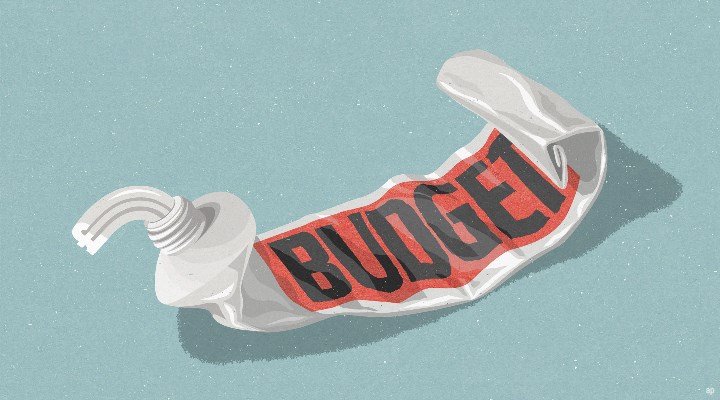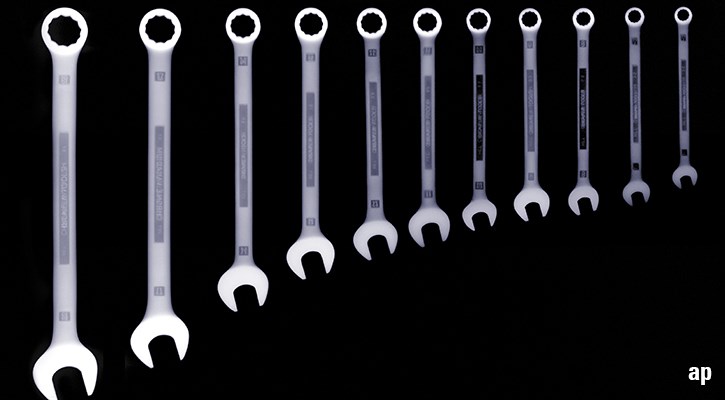Despite the turmoil within the Conservative Party as its scrambles for a new leader, we’re not talking about "TINA" because it was one of Margaret Thatcher’s slogans.
TINA, or "There Is No Alternative", refers to staying invested in an asset class, and primarily equities, because the alternatives don't match up.
And after what can only be described as a mixed year for equities, it’s understandable investors are looking elsewhere to get better returns. But with bonds offering weak returns as well, are there really any alternatives that could offer a hedge?
To test the TINA theory, we’ve taken a look at how various asset classes have performed both recently and over the past 20 years, to see whether your money could have worked better for you elsewhere.
Earlier this month, we released our global fund flows analysis. In the report, Morningstar’s chief content strategist Sylvester Flood noted investment flow rates have been modestly negative. This is because TINA still dominates: interest rates remain relatively low, inflation is high, and there is no obvious alternative risk asset providing escape.
When looking at a longer horizon – we’ve looked at 20 years here – no asset class is able to match equities, however.
If you invested $10,000 (£8,326 at today's exchange rates) in a global index fund tracking the S&P Global BMI 20 years ago, you would now have $56,485 (fees excluded). During the equity year 2021, the index even exceeded the $60,000 mark.
Meanwhile, the same amount invested in bonds, as tracked by Bloomberg’s Global Aggregate index, would have almost doubled, hitting $18,932. The 2010s was a clear inflection point for where equity growth took off against bonds and commodities, which look stagnant in comparison. Central banks launched quantitative easing programmes and slashed interest rates in the period from 2010 to 2020. Bond yields came under pressure, but prices soared as central banks bought debt. So bonds offered growth, but cheap money also helped fuel risk-taking in the equity markets, supercharging growth stock gains.
Commodities would have "only" offered 50% growth over 20 years, according to the Bloomberg Commodity index. It has struggled to offer the level of security and growth it did before the 2008 crash. The asset class is viewed to be a safe haven during volatile periods, and the category often performs well in the later stages of an economic cycle.
If we look at 2022 in isolation, evidence does suggest that if you followed a commodity index, your money would have been better placed here, proving that diversification is your best friend during periods of turmoil.
JPMorgan’s Global Core Real Assets Trust (JARA) has, however, managed to do well in 2022 so far. The trust is up 21.78% year to date and was trading at a premium to its NAV in July. Phil Waller, the trust’s co-manager, says "core" real assets should continue to offer investor support, particularly for investors who are looking for income. As will a spread of assets that are uncorrelated to each other and to other financial assets such as stocks and shares.
"For those looking to potentially cushion the effects of inflation upon their portfolios, investing in real assets offers not only inflation hedging benefits but also access to a broad range of exciting trends across a variety of sectors," he says.
Beyond their tangibility, real assets have inherent protections against inflation through the income they generate, which is often contractual. Waller explains inflation mark-ups are written into contracts and therefore they continue to yield a growing, inflation-protected income over time.
"As such, they aim to provide investors the opportunity for a stable, volatility-reducing income stream even during levels of high market uncertainty andinflationary risks."
The trust’s portfolio is 50% real estate, 30% utilities and 19% industrials – so how have these alternatives done well in this environment? These are Waller’s take-aways on real-estate, infrastructure and transportation.
Real Estate
"Demand for residential property has been significant, thanks to demographic trends and a growing number of smaller households, particularly in countries like Japan.
"As property prices and mortgage rates rise, more households are also likely to rent, rather than buy, sustaining the demand for residential units. We’ve also seen a flight to quality. In today’s market, many real estate asset owners with high-quality assets will have the flexibility to increase rents at or above inflation."
Infrastructure
"Infrastructure investments, like utilities and renewables, can also offer a notable degree of inflation protection for investors. Regulated utilities, for example, typically exist within regulatory frameworks that allow for relatively explicit inflation protection via passing through costs and expenses.
"Similarly, within power generation, a company such as a producer of renewable energy may have contracts in place which allow for inflation indexing or they may benefit from higher market prices that often occur during inflationary periods, providing potential upside."
Transportation
"When it comes to inflation, transportation as an asset class probably has the least explicit protection for investors as lease rates are often fixed throughout their life. That said, over the long-term, lease rates have been correlated to inflation when they come for renewal and asset values are also well correlated owing to replacement values going up when inflation is high. As such, we see transportation as having the ability to provide some inflation protection over the medium to long term."
But What About Gold?
Gold is considered the most popular safe haven. It makes up a significant portion of central bank reserves and is a classic alternative for investors looking to store value and hedge against inflation – its value usually isn’t impacted by other asset classes' performance.
Over the past 20 years, the midas material's value has grown at about 10% year-on-year, outpacing both inflation and cash savings. And, during the first quarter of 2020, when the world was beginning its battle against Covid-19, the London gold price rose by 5.8%. Commonly, higher interest rates increase the opportunity cost of holding non-yielding bullion as well. So what about buying gold now?
Looking at 2022, the price is about the same as it was at the start of the year, down about 1%. It proved popular during the turbulence and uncertainty in February and March, when Russia invaded Ukraine, but since then, the price has come down to around $1,760 now - from just over $2,000 earlier this year.
But, according to Andy Dickey, divisional director for precious metals at The Royal Mint, the gold market is "proving once again to be resilient during extremely difficult market conditions". Volatility is continuing, "but overall gold continues to make gains as economic uncertainty continues."
So is TINA a cast-iron investment rule? Maybe not. But whether investors have access to the right products to sufficiently diversify their portfolios to withstand potential downturns is a different matter. As always, a well-diversified portfolio with a long-term horizon is an investor’s best friend.
 These Highly Rated Bond Managers are Backing EU Banks
These Highly Rated Bond Managers are Backing EU Banks
 Flash PMIs: What to Expect from Eurozone Data
Flash PMIs: What to Expect from Eurozone Data
 Are FTSE Mining Companies Cheap Right Now?
Are FTSE Mining Companies Cheap Right Now?
 Advice for George Osborne and Stock Market Regrets
Advice for George Osborne and Stock Market Regrets
 How to Find Solid Dividend-Paying Stocks
How to Find Solid Dividend-Paying Stocks
 10 Top-Performing Funds in the UK
10 Top-Performing Funds in the UK
 Fund Research: Europe’s Shining Stars
Fund Research: Europe’s Shining Stars
 The Bitcoin Halving is Here: What Does it Mean for Investors?
The Bitcoin Halving is Here: What Does it Mean for Investors?
 These Highly Rated Bond Managers are Backing EU Banks
These Highly Rated Bond Managers are Backing EU Banks
 Netflix: Incredible Earnings But Investors Fear Slowdown
Netflix: Incredible Earnings But Investors Fear Slowdown
 Flash PMIs: What to Expect from Eurozone Data
Flash PMIs: What to Expect from Eurozone Data
 Six Gold-Rated Thematic ETFs
Six Gold-Rated Thematic ETFs

















